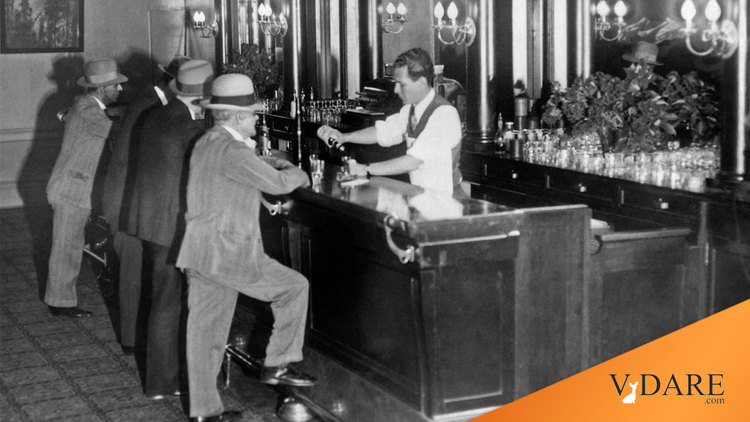


By Steve Sailer
09/23/2021
From Alex Tabarrok in Marginal Revolution:
I was taken aback by the bottom line of Mike Andrews new working paper Bar Talk: closing the saloons during prohibition reduced patenting by ~15%. At first, I thought that seemed like a very large decline but bear in mind that saloons were the coffeehouses of the day devoted not just to drinking but to meeting, talking and learning. Indeed, they were much more common than coffeehouses today:
The saloons also often combined social aspects with a mailbox depot, telegraph or telephone, and a payday lender so they were good places to talk shop.
Andrews compares countries that were forced dry by state prohibition laws with previously dry counties, so the estimates are local and from across the country. He has significant patent data including the location of inventors and a variety of important robustness tests. Women, for example, didn’t typically patronize the saloons but also continued to patent at similar rates in wet and dry counties.
Wilfrid Sheed wrote of the mid-century “New Yorker”:
“Thurber’s world cannot remotely be understood without understanding Prohibition, or the locker-room version of it: a plot brewed up by women and Protestant ministers while our soldiers were overseas, in order to end America’s men-only culture and bring the boys all the way home, not just as far as the nearest saloon.”
Feminism triumphed in 1919, pushing through both women’s suffrage and prohibition. The latter so alienated creative men that feminism fell out of fashion for a half century.